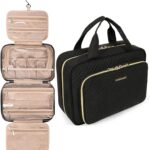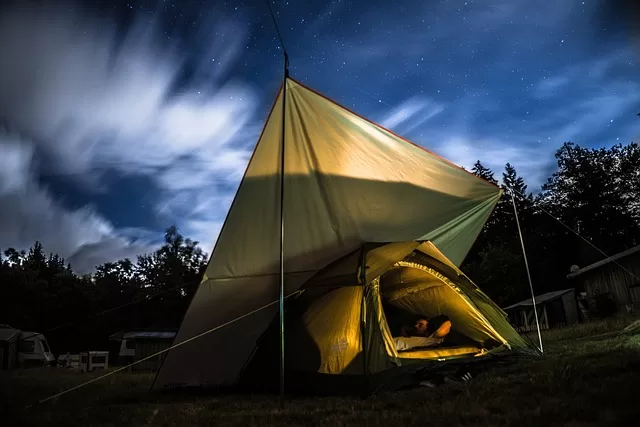The sun was beginning to set, casting a warm orange glow over the rugged terrain of the mountain range. My friend and I had been hiking all day and were looking forward to setting up camp for the night. As we made our way down a steep incline, I realized something terrifying: we were lost.
Panic set in as we tried to retrace our steps, but with no clear landmarks in sight, we had no idea which direction to head. That’s when I remembered the small compass I had tucked away in my backpack. With trembling fingers, I pulled it out and began to orient ourselves based on the cardinal directions.
As we made our way back on track, I couldn’t help but think about how different our situation could have been without that tiny tool. That experience taught me a valuable lesson about the importance of having a compass on your camping trip.
In the wilderness, where signs and markers can be scarce or misleading, a compass can be a lifesaver. It provides a reliable method of navigation and helps prevent getting lost or disoriented in unfamiliar terrain. In this article, we’ll explore the importance of having a compass on your camping trip, why having a compass should be a mandatory item on any camping checklist, and how to properly use one to ensure a safe and enjoyable outdoor adventure.
The benefits of Using a Compass When Camping
Using a compass when camping is one of the ways to have an enjoyable and successful camping trip. It is a simple but effective way to ensure accurate navigation, increased safety, improved planning, and an enhanced overall experience. Don’t leave home without one! There are many importance of having a compass on your camping trip and some of these include the following.
A compass allows for accurate navigation in the wilderness. With a compass, you can determine your exact location on a map and plan your route accordingly. This can help prevent getting lost or disoriented, saving you time and ensuring that you reach your destination safely.
Increased Safety
Using a compass can also increase your safety when camping. If you become lost or disoriented, a compass can help you find your way back to camp or to the nearest trail or road. This can be especially important in emergency situations, where time is of the essence.
Improved Planning
Using a compass when camping can also help you know how to plan your camping trip by helping you plan your route more effectively. By understanding the direction of your travel, you can plan your stops and campsites accordingly, ensuring that you have access to water and other necessary resources.
Enhanced Experience
One of the importance of having a compass on your camping trip is an enhanced overall experience in the wilderness. With accurate navigation and increased safety, you can relax and enjoy some chosen adventurous things to do while camping like hiking trails and navigating your surroundings while on it without worrying about getting lost or stranded. Additionally, the act of navigating with a compass can be a fun and engaging challenge, adding a new level of excitement to your camping trip.
Types of Compasses
Compasses come in several different types, each with its own unique features and benefits. Here are the most common types of compasses:
Magnetic Compass
The magnetic compass is the most common type of compass. It uses a magnetized needle that aligns itself with the Earth’s magnetic field to show the direction of the magnetic north. Magnetic compasses are easy to use and affordable, but they can be affected by nearby magnetic objects, so it’s important to keep them away from metal objects and electronic devices.
Lensatic Compass
The lensatic compass is a more advanced type of compass that’s commonly used by the military. It has a sighting mechanism that allows for more accurate readings, and a hinged cover that protects the compass face from damage. Lensatic compasses are more precise and durable than magnetic compasses, but they can be more difficult to use and more expensive.
Orienteering Compass
The orienteering compass is specifically designed for orienteering competitions, which involve navigating through a course with a map and compass. It has a rotating bezel with degree markings that allows for precise navigation and a clear base that can be placed directly on a map for accurate readings. Orienteering compasses are lightweight and easy to use, but they may not be as durable as other types of compasses.
GPS Compass
The GPS compass is a digital compass such as Google Maps and Apple Maps that uses satellite signals to determine direction. It can be integrated into a handheld GPS device or smartphone, providing accurate navigation without the need for a physical compass. GPS compasses are easy to use and provide real-time tracking, but they can be affected by poor weather or satellite coverage, and they require battery power.
Comparison of the Types of Compass
As earlier stated, there are several types of compasses available for navigation in the wilderness. The magnetic compass is the most common and affordable, while the lensatic compass is more advanced and durable. The orienteering compass is specifically designed for orienteering competitions, and the GPS compass provides digital navigation without the need for a physical compass. It’s important to choose the right type of compass for your needs and to learn how to use it properly before heading out on any wilderness adventure.
How to Use a Compass
Learning and knowing how to use a compass is an essential skill for anyone planning a camping trip or hike in the wilderness. By understanding the parts of a compass, orienting it properly, taking a bearing, and following a bearing, you can navigate with confidence and ensure a safe and successful trip. Here are the basic steps for using a compass:
Understanding the Parts of a Compass
Before using a compass, it’s important to understand its basic parts. The magnetic needle is the most important part of the compass, as it points toward the magnetic north. The rotating bezel contains degree markings, which can be used to measure angles and bearings. The baseplate is a clear plastic surface that allows for accurate readings of the map.
Orienting the Compass
To use a compass, it must first be properly oriented. Start by placing the compass on a flat surface, and then rotate the bezel so that the arrow on the baseplate points towards magnetic north. Next, hold the compass level and turn your body until the magnetic needle lines up with the arrow on the baseplate.
Taking a Bearing
To take a bearing, hold the compass level and sight along the direction of the travel arrow. Rotate the bezel until the index line lines up with the magnetic needle. The degree reading on the bezel is the bearing, which tells you the direction of the destination.
Following a Bearing
Once you have determined the bearing, you can use it to navigate to your destination. Hold the compass level and sight along the direction of the travel arrow. Then, turn your body until the magnetic needle lines up with the index line on the bezel. Keep the needle aligned with the index line as you walk toward your destination.
It’s important to note that using a compass requires practice and patience. It’s a good idea to practice using a compass in a familiar area before relying on it in the wilderness. Additionally, it’s important to keep the compass away from magnetic objects and electronic devices, which can affect its accuracy.
When preparing for a camping trip, it’s important to prepare for navigation in the wilderness. Preparing for navigation in the wilderness is an important aspect of planning a camping trip. By packing a compass and backup navigation tools, and properly maintaining your equipment, you can navigate with confidence and ensure a safe and enjoyable camping experience. Here are some things to consider:
The Importance of Packing a Compass
A compass is one of the essential camping gear and tools if you are not planning to get lost while navigating the wilderness. It is what will allow you to determine the direction and navigate accurately. Make sure to pack a compass in your camping gear and keep it easily accessible.
While a compass is a crucial navigation tool, it’s important to have backup options as well. Consider packing a GPS device, maps, and a handheld radio or whistle for emergencies. It’s also important to learn how to navigate using natural features such as the sun, stars, and landmarks.
Proper Maintenance of a Compass
To ensure the accuracy and reliability of your compass, it’s important to take proper care of it. Keep your compass away from magnetic objects and electronics, which can affect its accuracy. Store it in a dry and secure place when not in use, and clean it regularly with a soft cloth.
It’s also important to check the accuracy of your compass periodically. To do this, find a known landmark and take a bearing using your compass. Then, compare the bearing to the known direction of the landmark. If there is a significant difference, your compass may need to be adjusted or replaced.
Conclusion
In conclusion, the importance of having a compass on your camping trip cannot be emphasized enough. The wilderness can be a challenging and unpredictable environment, and the ability to navigate accurately can make all the difference in ensuring a safe and enjoyable experience.
By understanding the importance of having a compass on your camping trip as one of the navigation tools and knowing how to use it, you can confidently explore the outdoors without fear of getting lost or disoriented and feel free to explore all the exciting and crazy things to do while camping with friends. In addition, taking the time to properly maintain your compass and pack backup navigation tools can provide an extra layer of safety and security.
Whether you’re an experienced camper or a beginner, it’s important to prioritize navigation skills and tools when planning your trip. With a compass and a little preparation, you can navigate with confidence and enjoy all the beauty and wonder that the wilderness has to offer.



























